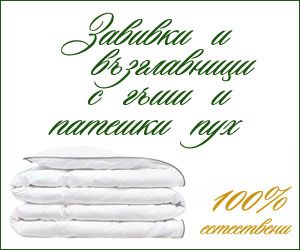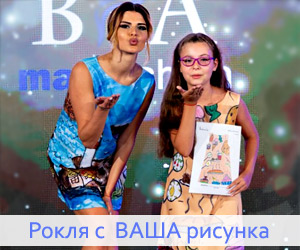THE FASHION INDUSTRY IN CONTEMPORARY BULGARIA
When people say „Bulgarian fashion”, usually is understood „Bulgarian fashion design”. Our concept however is wider. Under „Bulgarian fashion” we mean as what is produced in Bulgaria, as also what is sold, and this means also – what is imported, in our country. Besides „Bulgarian fashion” are not only the articles in the stores and in the boutiques, but also the whole fashion scenery, including the fashion in the street, in the coffee shop, in the club, in the disco etc. So let us don’t generalize too nihilistically that Bulgarian fashion doesn’t exist, or that we the Bulgarian people, don’t dress well. Many of us succeed to be elegant in the work, and at home, and at official places. When it doesn’t happen, the most often reason is the cultural and aesthetical deficit, but not the financial. However money doesn’t have to be ignored. The quality clothes, made of hopeful textile, are expensive, and the consultations with good image-maker and specialist at styling require serious investments.
The fashion, besides public and communicative character, has also clearly expressed industrial and business profile. For its more precise economic characteristics is good to be known that in 2008 the occupied in the production of clothes in our country are specialized mainly in the creation of lady’s store clothes – trousers, skirts, jackets, dresses, blouses, shirts, top garment. In the fashion industry was engaged more than 120 000 people. The results are from special inquiry research among the companies – members of BAPIOT. Between 80 and 90% is the share of the work made to order from the whole production of the companies in this sector. The export is with relatively permanent share during the last three years, and the three companies that realize the biggest turnover in 2007 (between 16 and 20.8 million BGN), work entirely for the exterior markets. What are these exterior markets? It’s found to be that they coincide with the main marketing priorities of the Bulgarian producers of clothing, and namely – Germany, Italy, France, Greece. Some of the fashion houses and companies export for Netherlands, Norway, Hungary, Russia, Korea and Japan. Delightful fact is that the Bulgarian companies for clothes define them selves as producers for the middle and for the high pricing segments in the west European markets. Among the foreign commercial brands, for those work our companies, are such famous names like „Hugo Boss”, „Esprit”, „Roy Robson”, „Tommy Hilfiger”, „Balmain”, „Lise Charmel”, „Next” and a number of others. These Bulgarian companies for clothing have quite stable material resource and building fund. Almost 80% of them dispose with private production buildings, and about 50% of them have private stores.
Motley and heterogeneous is the dynamics in the development of the creation and of the distribution of the Bulgarian fashion articles. The second year of our membership in the European Union was marked with strengthened concurrence and growth of the trials and of the challenges in front of our fashion houses, designers, entrepreneurs and investors. In the Bulgarian fashion branch started to be felt already the negatives from the world financial crisis. On the basis of the alarming data of some organizations for textile and for tailoring services recently the newspaper „Dnevnik” made one almost shocking recapitulation for the decrease in the textile and in the fashion industry in Bulgaria. The bad results from the crisis situation (or maybe the pre-crisis period) only for the last some months show 10-15% run-down of the orders; 5.1% decrease in the production of textile; 12.5% decrease in the production of tailoring articles; 10.5% decrease in the production of knitwear. On the grounds of prognosis analyses are expected dismissals in 50% of the textile and tailoring enterprises and companies. All this means that is necessary special crisis corporate and state strategy for the management of the crisis in the fashion and textile industry. And this means professional mobilization and structural change in keeping with some more important factors. What are they?
At least four are the factors that presuppose still more quality professional mobilization and set of the creative, technological and communication conditions and criteria in keeping with the world and the European standards and norms for coping with the crisis and for future stable development:
First, serious re-examination of the active available material and human resources with a view to the avoidance of the unjustified expenses and the elimination of the inefficient and outmoded technologies and industrial models; the adequate usage of the quality stuff and output; the search and the finding of new market niches as abroad, as in Bulgaria.
Second, fashion and functional design that answers at the individual preferences of the consumers and especially of the new generations and together with this is in harmony with the world fashion tendencies and accents, as much as variegated and contradictory are they.
Third, search and finding of an adequate marketing mix, integration of the marketing communications and realization of the role of Public Relations and of the image making in the fashion sphere for the achievement as of the confidence of the society and of the target, as of the insurance of hopeful and quality distinguishing of the brand, of the product, of the article, made in Bulgaria.
Fourth, the realization of such kind of quality (distribution, pricing and assortment) change in the company strategy and politics to be met with dignity not only the hits of the world economic crisis, but also the direct competitive challenges of the big and famous brands that slide-ruling conquer the Bulgarian market space. We remind that only in 2008 in Bulgaria made their performances such fashion emblems like “Christian Dior”, “Vivian Westwood”, “John Galliano”, „Alexander McQueen”, „Prada”, „Miu Miu”, “Dolce&Gabbana”, “Yamamoto”, “Mosquino”, „Missoni”, “Chloe”, “Luisa Cerano”, “Nicowa”, “Cesare Paciotti”, „Salvatore Ferragamo”, „Roberto Botticelli”, some of those as independent commercial individuals, and others in multi brand boutiques like „Trend Box”.
Read: 73305 times © Fashion Lifestyle Magazine, issue 17, December 2008
MORE PUBLICATIONS:ISSUE 16: ABOUT THE FASHION AND THE ADEQUATE APPEARANCE
ISSUE 15: THE INSPIRATION IN THE FASHION DESIGN
ISSUE 14: WHERE IS OUR FASHION SELF-CONFIDENCE?
ISSUE 13: LUXURY OR THE DILEMMA FOR THE CONSUMER CULTURE
ISSUE 12: ONE YEAR SOUNDS REALLY SERIOUSLY!








